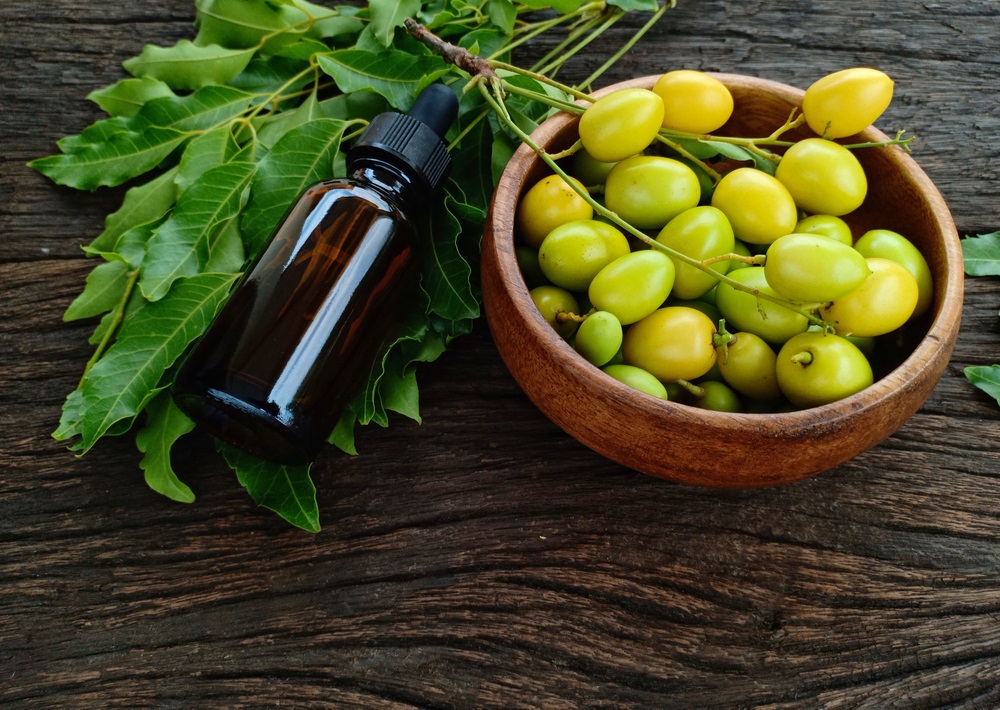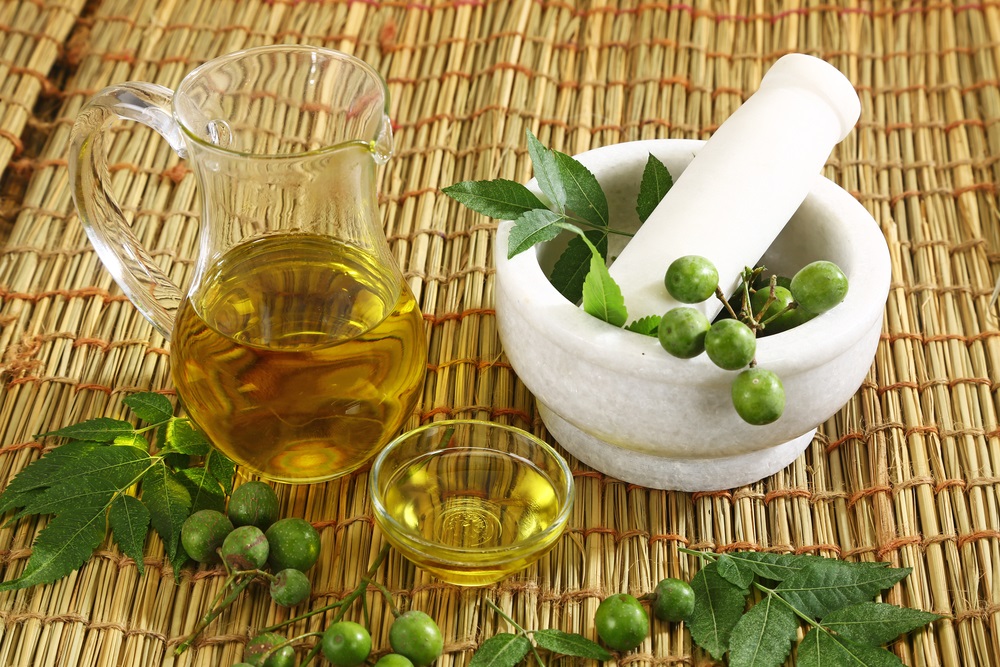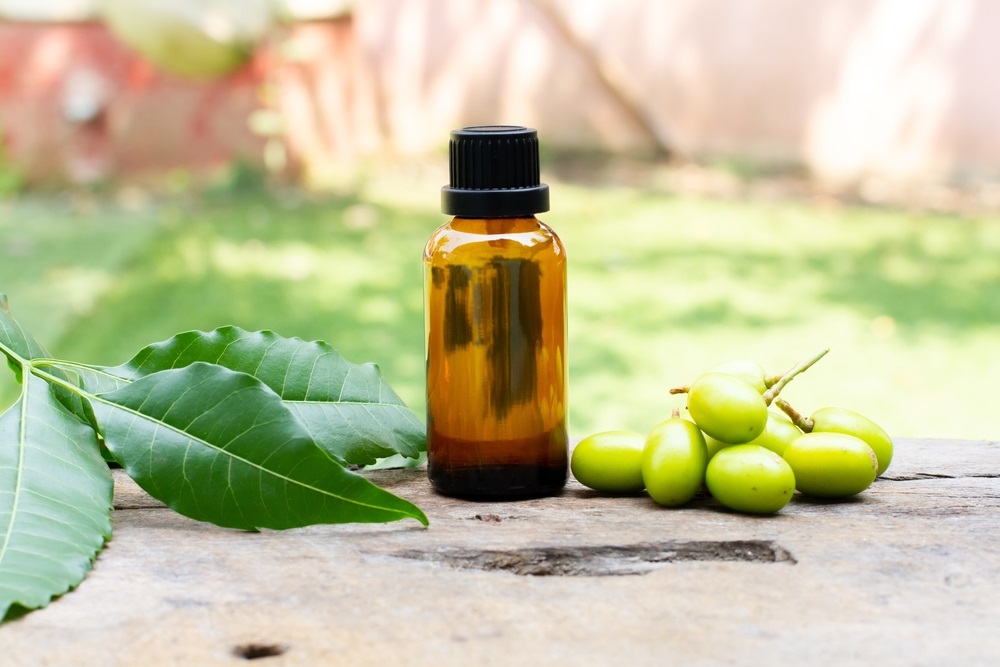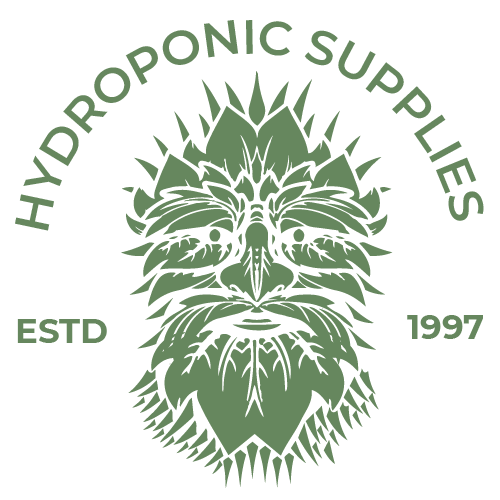
Look no further than neem oil if you’re looking for a safe and reliable treatment to control insects and illness in your lawn and garden. It’s an effective organic remedy for the most challenging infestations. Continue visiting Creative Grow Store to learn about all the advantages neem oil has for plants.
What Is Neem Oil?
A natural pesticide known as neem oil is produced by pressing the seeds of the neem tree (Azadirachta indica). This tropical tree, which is related to mahogany, is indigenous to India and Africa. It is also used to control a variety of illnesses and insect pests. Neem oil serves a number of medical and cosmetic purposes in addition to being a pesticide for plants. The neem tree naturally produces neem oil as a byproduct. The seeds and leaves of the plants are harvested for their oil.
Neem leaf have been used therapeutically for thousands of years in India and Pakistan to support the immune system, purify the blood, improve liver function, and maintain healthy circulatory, digestive, and respiratory systems. Despite all of its advantages, neem oil for plants is best recognised for its use as a powerful insecticide. Let’s examine some of the most advantageous neem oil uses and benefits for gardening. Use to get rid of aphids, spider mites, caterpillars, coddling moth, black spot, powdery mildew, and scabs. In order to kill overwintering eggs and larvae, neem oil is best sprayed when trees are dormant. During the growing season, use neem oil to ward off pests or eliminate them.
Benefits of Using Neem Oil for Plants
Below mentioned are the neem oil benefits …
- Effective at Controlling Nematodes/Roundworms:
Nematodes can cause extreme damage to plants and are difficult to manage. Root-knot nematodes, one of the most dangerous kinds of nematodes, have been shown to respond favourably to a number of neem kernel extracts. Neem oil works by postponing the appearance of larvae.
- Beneficial Earthworms Wouldn’t Get Harmed:
Neem oil has the reverse effect of conventional chemical pesticides by promoting earthworm activity. Why is this crucial? Garden soil benefits from having earthworms in it. As they dig through the soil, they make passageways for air and rainwater to reach the roots of plants. Additionally, these little creatures leave behind casts, which are excretions that are rich in potassium, nitrogen, and phosphorus for the soil. The decomposing carcasses of dead earthworms contribute to soil fertilisation.
- Used as Dormant Application or Foliar Spray:
Neem oil may kill insects at different stages, so you can use it to eliminate overwintering pests and their eggs during the dormant season or as a foliar spray to deter and kill insects during the growing season. Neem oil spray can be used for insects that are dormant, such as tent caterpillars, leaf rollers, and other caterpillar eggs that remain on plant leaves throughout the winter.
- Controls Lawn Grubs:
Lawn grubs, which are the Japanese beetle’s larval stage, can seriously harm your lawn. They gnaw on grass roots while burrowing beneath turf. Large brown or barren places will stand out to you in regions where grub activity is considerable. By stopping Japanese beetles from laying eggs that develop into harmful larvae, neem oil also helps to control these insects. Additionally, it prevents grub growth and keeps them away from grass roots. Neem oil as white oil for plants should be used to the grass at night and again after it has rained for best benefits.
- Neem Cakes, a Good Fertilizer and Effective Pesticide:
Neem fruit and kernels are cold-pressed to produce organic manure, which is then used to make neem cakes. Because they function as both a pesticide and a fertiliser, neem cakes are particularly unique. By increasing the nitrogen’s availability, they fertilise the soil and aid in the management of nematodes, white ants, and grubs.
- Beneficial for Indoor Plants:
Having aphids take over your indoor plants is one of the worst experiences. Use of neem oil inside to ward off pests and illness is safe. Spraying the leaves will enough to get rid of pests without endangering your family’s children or pets.
- Safe for Greenhouse:
A greenhouse’s environmental conditions are ideal for mites, aphids, scale insects, and whiteflies. Give these bugs no chance at all! help stop your plants from being harmed by harmful insects.
- As a Great Fungicide:
Neem oil can be used to treat or even eliminate fungal growth on your plants. Use neem oil to treat black spot, scab, powdery mildew, and other prevalent fungal illnesses. Spray sensitive plants with fungus preventative every seven to fourteen days until the fungus is no longer a danger. Spray plants once a week with fungicide until the problem is resolved, and then every two weeks to prevent recurrence.

- Works as a Bactericide:
Neem oil has the ability to eradicate fire blight, a bacterial disease that makes plants’ leaves wilt and appear burned. Spraying trees during their dormant state will help prevent fire blight. On tree trunks, twigs, and branches, the bacterium that produces fire blight cankers spends the winter.
- Protects Fruit Trees:
Worms are a common problem for apple trees, with the meal worm and coddling moth being the two most prevalent types. These parasites infest the apples, rendering them unfit for consumption. Spray your plants and trees early – before blossoming, again when the petals fall, and then every two weeks following to control these pests. This will keep your fruit trees and berry bushes insect-free. If you use neem oil, some of the common fruit tree pests won’t harm you. Stick flyers to rose leaves, Leafhoppers, dirty plant bugs, etc., and cover aphids with wool. Berries frequently experience powdery mildew and other fungal infections that can be treated with neem oil, such as:
- Burning Blight
- Wilting of Vegetables
- Orange-Rust
- Protects Veggies From Pests And Fungus:
Neem oil works as a pesticide and fungicide in the vegetable garden. It combats aphids, whiteflies, tomato hornworms, maize earworms, and other arthropod pests that frequently eat your produce.
Neem oil also controls prevalent fungi that grow on vegetable plants, including Leaf stains and rusts and Wilts Stem degenerates.
Neem oil should be sprayed on vegetable plants twice—once at night and once in the morning. By spraying during these times, you can be sure that you are not harming any helpful insects, like bees, which are important for pollinating vegetable plants.
- Protects Nut Trees and Ornamental Trees:
Autumn webworms are frequent pests of many nut trees, including walnut and pecan trees. They resemble tent caterpillars. These bugs can contaminate host trees’ leaves, fruits, and nuts. In the crotches of tree limbs, autumn webworms construct silken nests. When you spray neem oil on worms and caterpillars on trees, it must come into contact with the pest.
- Keeps the Mosquitos Aside:
It’s comforting to know that the same things you spray on your plants to guard them against insects, viruses, and fungus can also keep mosquitoes away when you’re out in the garden. Although neem oil pesticides shouldn’t be used directly to your skin due to inert elements, you can if you so like.
- Safe for Pets and Wildlife Animals:
Synthetic pesticides that are lethal on contact often build up in the environment around them, leaving behind toxic residue that can harm or even kill nearby pets and other animals. Contrarily, neem oil is non-toxic and biodegradable. It can be used without endangering birds, animals, fish, livestock, or other local wildlife.
- Organic and Biodegradable:
Neem oil is naturally produced by the neem tree (Azadirachta indica), an evergreen species that is native to India. As a result, it is organic and biodegradable. Neem oil is made by crushing the tree’s seeds. Water or a solvent is then added to finish the process. Neem oil may contain a variety of active compounds, depending on the processing technique.
- Non-killer as Insecticides can:
Neem oil does not leave a dead zone around the treated plants, trees, or bushes, similar to other synthetic pesticides. Only insects that consume and chew on leaves are hunted by it. Synthetic pesticides create “death zones” that, by creeping out from the treated areas, can kill both beneficial insects and other animals.
- Controls Insects at All Stages of Development:
Neem oil kills insects at all stages of development, including adult, larval, and egg stages. The main component of neem oil, azadirachtin, kills insects in a number of ways, including as a preventative and as a hormone disruptor.
Azadirachtin suffocates the pest or insect, causing it to stop eating the leaves. Neem oil interferes with insects’ regulating hormones, preventing them from moving on to the next stage of development when they come into contact with it. An effective insecticide that kills a variety of insects is neem oil. Among the most prevalent are Scale, hopper leaves, a white fly, caterpillars, mites, mealy bugs, thrips, and mites
- Protects The Herbs:
Herbs can be harmed by the same insects and fungi that wreak havoc on your vegetable crop. These pests consist of:
- Leaf miner aphids
- arachnid mites
- Dark mould
- Rusts Whiteflies
- Doesn’tPollute Water:
Neem oil won’t contaminate ground water or produce harmful runoff into streams and nearby bodies of water because it is biodegradable and non-toxic.
- It Won’t Harm Insects:
Pollinators are dwindling in number. Chemical pesticides prevent the bees from gathering food, which eventually results in their demise. Neem oil, however, won’t hurt medium to big hives or the honey bees if used sparingly, allowing you to maintain your pollinators and plant life. Neem oil pesticides are safe to use near butterflies, ladybirds, and the majority of other beneficial insects because they only kill bugs that nibble on leaves.
How to Use Neem Oil on Plants?
Products containing neem oil can be found in a variety of forms, including dust, granules, wettable powder, cake, and concentrate. You can buy ready-to-use spray bottles of solutions or make your own by combining concentrates. Give it at least 4 to 7 days to take effect, and repeat applications as directed if necessary.

The following are the main applications for neem oil for plants:
- Dormant spray – To kill overwintering garden pests and their eggs, apply when plants are dormant. Neem oil should be applied on a dry, windless day for best results.
- Foliar spray – To prevent pests and diseases throughout the growing season, apply neem oil directly to leaves whenever possible.
- Soil drench – Neem oil is diluted with water and placed into the ground or potting soil as a soil drench. Sucking insects will consume the solution when it is spread systemically throughout the plant by the roots.
- Houseplants – Whitefly, spider mites, mealybugs, fungus gnats, aphids, thrips, scale, and fungal diseases can affect indoor plants. Spray foliage or soak soil every 7 days to combat infestations until all pests have disappeared. Every three weeks, spray the soil as a prophylactic precaution. Make sure to thoroughly coat the tops and undersides of leaves while spraying vegetation. To make sure they are not sensitive to it, test a little area of each plant first. To avoid stains or other damage, avoid getting oil on fabrics or furniture.
- Fruit trees – Fruit trees like apple, cherry, nectarine, pear, peach, and plum can benefit from neem oil application. Use to get rid of black spot, powdery mildew, scab, caterpillars, coddling moth, spider mites, and aphids. Neem oil can best be applied when trees are dormant in order to destroy overwintering eggs and larvae. Use neem oil as a deterrent or to get rid of pests during the growing season. Apply as a soil drench or foliar spray. Neem oil concentrate should be diluted with water before being mixed with a little amount of liquid soap. Cover a sizable area using a pump sprayer, then repeat as necessary. Fruit trees may suffer harm or even die if sprayed too regularly.
- Vegetables – Use neem oil to get rid of pests including aphids, beetles, cabbage worms, maize earworms, tomato hornworms and whiteflies that cause problems for vegetables. Additionally, it can be used to treat fungi-related ailments such leaf spot, mildew, rust, stem rot, and wilt.
- Lawns – Neem oil is useful for treating fungus-related illnesses like red thread, rust, and grey leaf spot as well as lawn pests like grubs and Japanese beetles. Sunken, discoloured, or dead grass patches could be signs of an infestation or disease. Use a neem oil mixture as a soil drench or foliar spray on the afflicted areas.
- Garden plants – Neem oil will help many ornamental plants by treating pests and diseases. Determine which approach will be most successful after evaluating and diagnosing the issue.
FAQs
- What Is Neem Oil Used For?
Neem oil may effectively cure more than 200 different kinds of insect pests, although it is most effective against soft-bodied chewing pests like aphids, mealybugs, scale, spider mites, and whiteflies that feed on plant foliage. This treatment also controls Japanese beetles, grass grubs, leaf hoppers, mites, nematodes, tent caterpillars, and thrips. Sprays made from neem oil extract are also used to treat bacterial and fungal diseases as rust, anthracnose, black spot, botrytis, fire blight, powdery mildew, and scab.
- Is Neem Oil same like Horticultural Oil?
Despite having different components, both are utilised as plant neem medicines. Mineral oils derived from petroleum or vegetable oils derived from canola, cottonseed, or soybeans are used to make horticultural oil. Horticultural oils may be utilised to address additional issues or have varying degrees of efficacy.
- Is Neem Oil Safe option for Insects?
Neem oil insecticide, when applied properly, rarely harms earthworms or beneficial insects like bees, butterflies, and ladybirds. These insects won’t consume the oil because they don’t eat plant leaf. Apply early in the morning or late in the day when beneficial insects are least active to avoid directly spraying them.
- What Kind of Fungal Diseases Neem Oil Kills?
Infections and diseases caused by fungi, such as powdery mildew, black spot, rust, sooty mould, mould scab, and leaf spot, can be successfully treated with neem oil.
- How Does Neem Oil Work?
Azadirachtin is the main component that is active. Insects’ capacity to feed is decreased and their ability to reproduce is disrupted by neem oil, which also serves to repel and smother them. Other substances found in neem oil are also useful for treating bacterial and fungal illnesses.
- Is Neem Oil Safe for Humans And Animals?
When used appropriately, neem oil is safe for both people and animals. This natural organic pesticide quickly degrades. Direct contact with oil can cause skin or eye irritation. Neem oil needs to be used carefully and should not be swallowed or inhaled. Reduce exposure and wear protective clothing for wider applications. Neem oil-sprayed fruits and vegetables should be properly washed before consumption. Since neem oil could be somewhat harmful to fish and other aquatic life, it should be avoided near ponds or streams.
- When to Use Neem Oil?
Neem oil can be used to repel pests and eradicate those that are already present during an infestation. Neem oil shouldn’t be used in the middle of the day because it might burn plants when combined with sunshine.
- How Frequently Should Neem Oil Be Applied To Plants?
To get the acute infestation under control, apply it roughly once or twice each week. Neem oil can be used every 7 to 14 days if all you want to do is keep pests away from your plants.
- Do You Spray Neem Oil On Soil & Leaves?
Use neem oil directly on leaves as a foliar spray at any time during the growing season to ward off insects and diseases. Neem oil is mixed with water to create a soil drench, which is then applied to the ground or potting soil.
- What Happens If You Put Too Much Neem Oil On Plants?
Using too much neem oil might make leaves burn if they are left in the sun for an extended amount of time. Neem oil should also not be applied to young or small plants since its potency may be too great for their roots and buds.
- How Long It Takes For Neem Oil To Work On Plants?
Working with neem oil takes time. Before you notice a decrease in damage or a drop in live insects, it could take two days or longer. To totally get rid of your target pests, you might need to reapply your neem treatment every three to four days, especially after a rain.
- What Plants Are Sensitive To Neem Oil?
Plants like caraway, basil, cilantro, marjoram, dill, parsley, oregano, and thyme shouldn’t be treated with neem oil. Spraying neem oil onto plants with fragile or wispy leaves, such peas, rocket, lettuce and spinach, should be done with caution as it may burn the leaves.
Conclusion
Neem oil thus keeps working well even after repeated applications. Up to the day of harvest, it is easy to use and efficient. Regardless of the concentration, neem oil can be sprayed directly onto plant leaves by blending it with water. Follow the directions on the label to make sure that the ratios of the oil and water are correct. Neem seed oil can be used all during the planting season and right up until harvest day, however many pesticides must not be used at certain times of the plant’s development. Your plants will always be safeguarded as a result. Other kinds of neem products include emulsifiable concentrate, dust, granules, and wettable powders.
TIPS: Testing a small area and looking for leaf damage after 24 hours is advised since neem oil may hurt delicate plants. Avoid application in direct sunlight to prevent leaf burn. Apply either in the morning or at night. In order to effectively treat pests or diseases, make sure that foliage is properly coated. Never make use of in very hot or very cold weather. Applying neem oil after transplanting plants should be avoided to minimise shock, as should doing so if plants are stressed from too much or too little watering. Spraying shouldn’t be done on young seedlings since their foliage is prone to burning. Their aint be a debate of eco oil vs neem oil when it comes to play on a safer side look for the required features.
